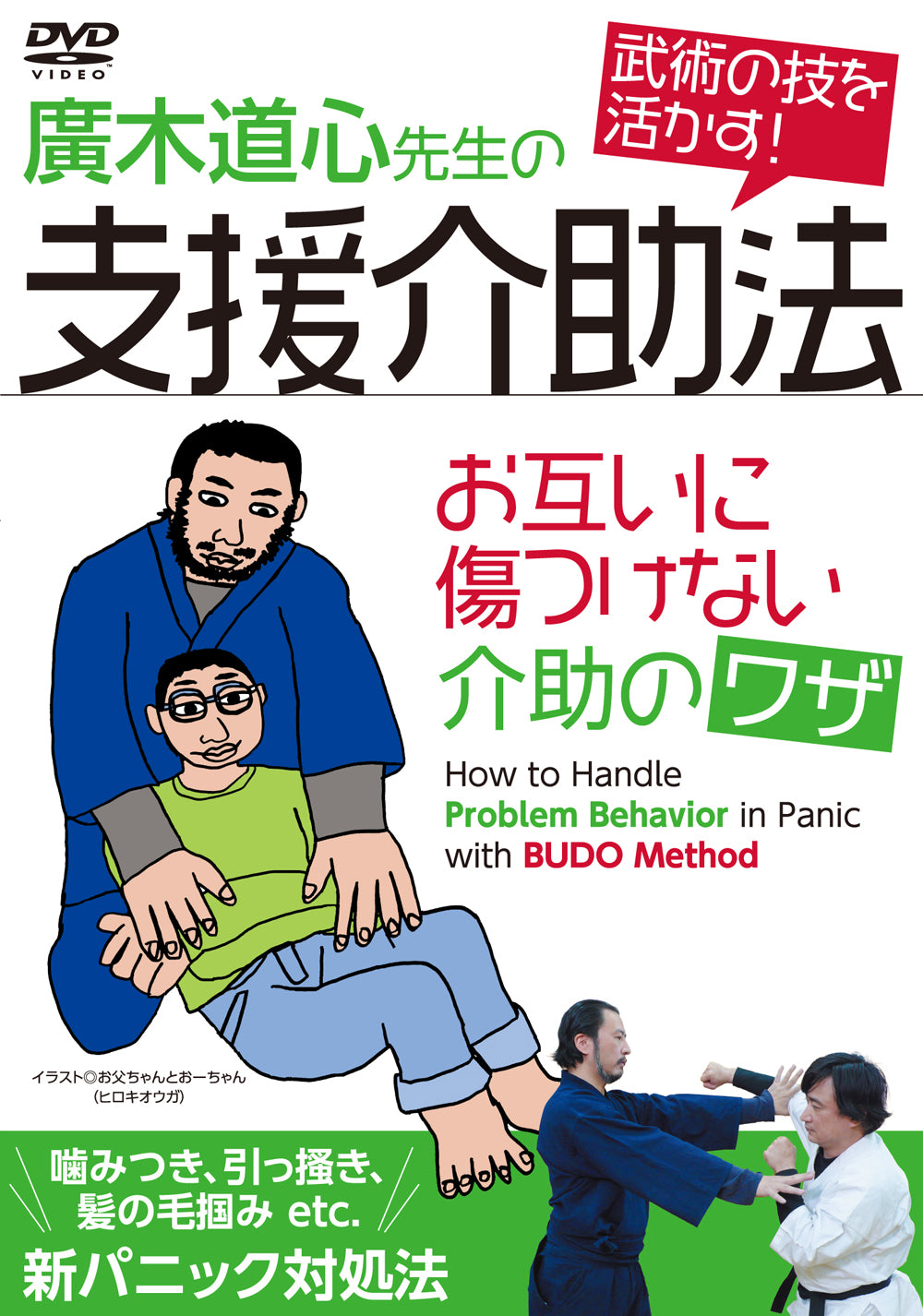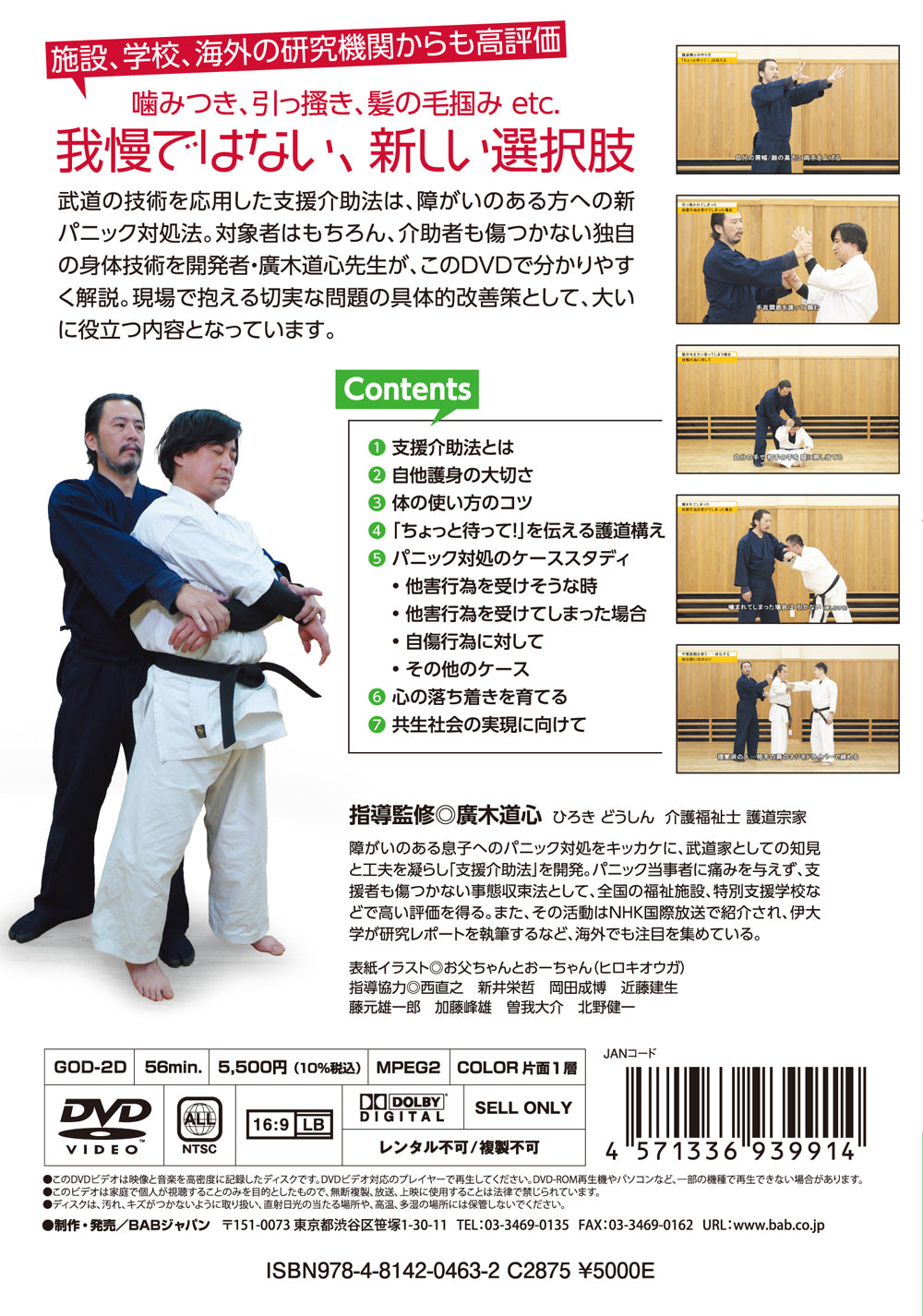How to Handle Problem Behavior with Budo DVD by Hiroki Doshin
THIS IS A SPECIAL ORDER ITEM
These items can take approximately 1-2 weeks to arrive here before they are ready to be shipped out by the selected courier service. Special order items are not eligible for return or exchange under any circumstances. Please review product details carefully before adding these items to your shopping cart.
Please Note: If you place an order for other items, they will be held and shipped together with the special order item when it is available. Alternatively you can place separate orders so your regular items will be shipped sooner.
Not Endurance, But a New Option! A DVD that will be highly useful in facilities, schools, and homes.
Conventional panic response methods suggest:
- Watch over them
- Move them to a calm space
However, challenges arise:
- It's difficult to observe when intense actions are happening
- Moving an agitated person is difficult (as pointed out by Hiroki Doushin-sensei).
Doushin-sensei is a well-known martial artist featured in magazines and on television. Through his experience of managing the panic of his son with disabilities, he realized that conventional methods alone can sometimes be insufficient.
Thus, combining martial arts knowledge and ingenuity, he developed a new panic response method that ensures no harm comes to either the individual or the supporter.
This DVD provides a thorough explanation of this new “Support Assistance Method.”
For example:
- Biting
- Scratching
- Hair-pulling, etc.
The practical techniques for dealing with these urgent issues have received high praise at welfare facilities and special needs schools across the country.
This multi-faceted approach, which goes beyond just physical handling, also delves into psychology and physiology, offering new insights.
Moreover, by strictly following the three criteria of physical restraint and combining response techniques with analysis and prevention (the traditional excellent methods), the ultimate goal is to prevent panic from occurring altogether.
CONTENTS
1) What is the Support Assistance Method?
- Traditional Panic Response Method… ① The Basics: Watch Over and Move
- Traditional Panic Response Method… ② Focus on Analysis and Prevention
- Traditional Panic Response… ③ Individual Trial and Error Approaches
- Improvement of Problems… Using Martial Techniques to Respond
- Flow of the Support Assistance Method… “Response” → Analysis → Prevention
2) The Importance of Self and Other Protection
- Response Techniques for Mental Health Facilities
- Human Rights of People in Panic Situations
- Injury Is Not Inevitable
3) Tips on How to Use the Body
- Training Method… Aligning Yourself
- Utilizing Three Sensory Types
- Using Unconscious Muscle Movements… Achieving Integration
- Training for Integration
4) Communicating “Wait a Moment!” Using the Gokudo Stance
- How to Create the Gokudo Stance
- Using Nonverbal Communication
- How to Maintain Distance from the Other Person
- One-Handed Gokudo Stance
- Gokudo Stance Without Structure
5) Case Studies on Panic Response
- When Facing Harmful Behavior
- When Struck (Grab, Scratch)
- When Kicked
- When Charged at
- When Objects Are Thrown
- When Harmful Behavior Has Already Occurred
- When Hair Is Grabbed
- When Scratched
- When Bitten
- When Spat At or Sneezed On
- Responding to Self-Injury
- When the Face is Struck
- When Hair is Pulled
- When the Head is Banged
- Other Cases
- When the Person Is Lying Down and Unresponsive
- When They Suddenly Run
6) Cultivating Calmness in the Mind
- Issues with Disconnection Between the Mind and Body
- Relaxing and Aligning the Body… Lifting and Carrying
- Increasing Serotonin Levels
7) Toward Realizing an Inclusive Society
- Adhering to the Three Criteria of Physical Restraint
- Aiming for a State Where Panic Does Not Occur
- Creating the Space for Inclusion Ourselves
Instruction by Hiroki Doushin Care Worker, Gokudo Soke
Inspired by managing the panic of his son with disabilities, Hiroki Doushin-sensei developed the “Support Assistance Method.” This method, which ensures no harm to the person in panic or the supporter, has gained high praise at welfare facilities, special needs schools, and more. His work was featured on NHK International Broadcasting, and research reports have been written by Italian universities, drawing attention even internationally.
Couldn't load pickup availability



